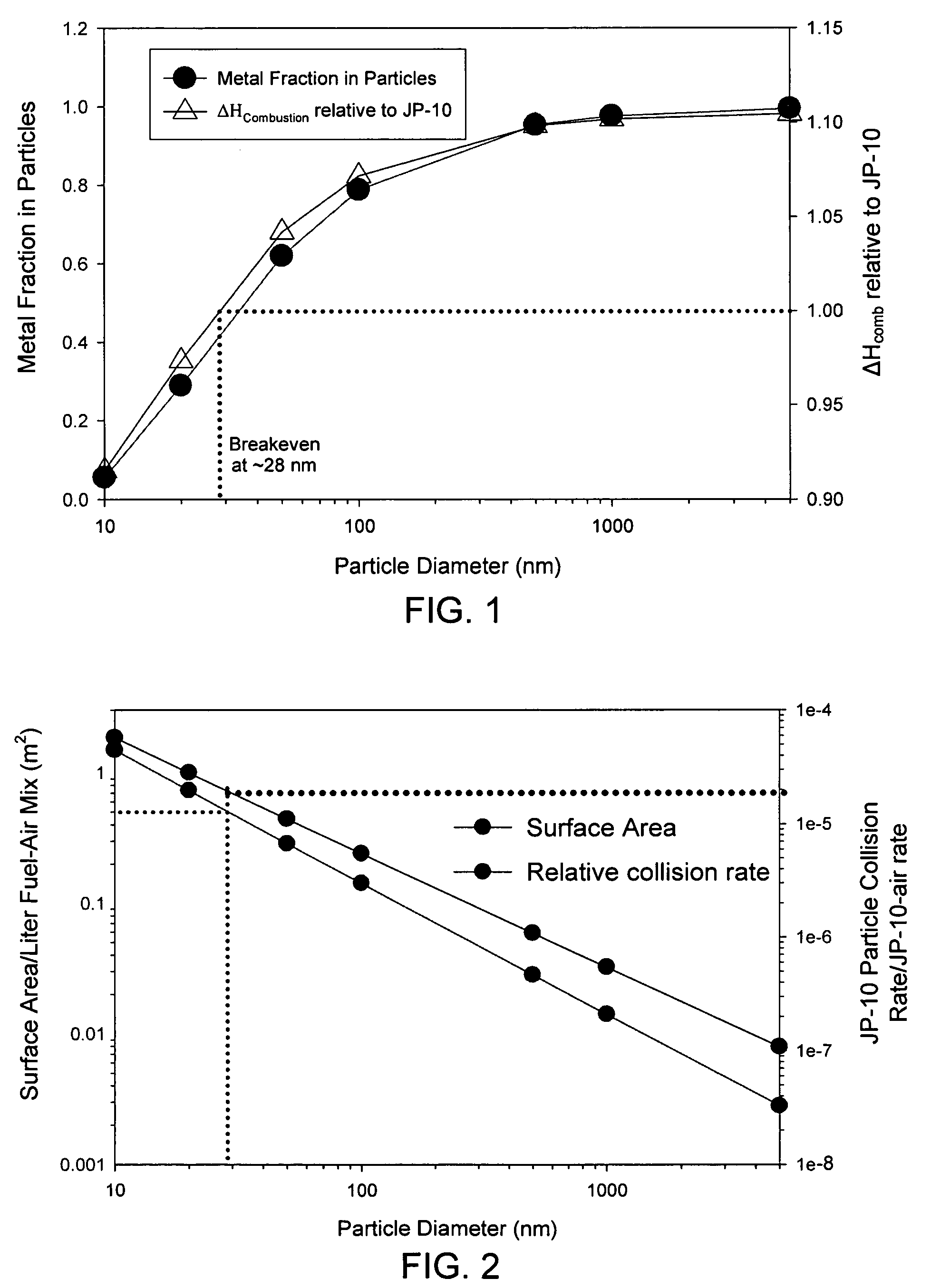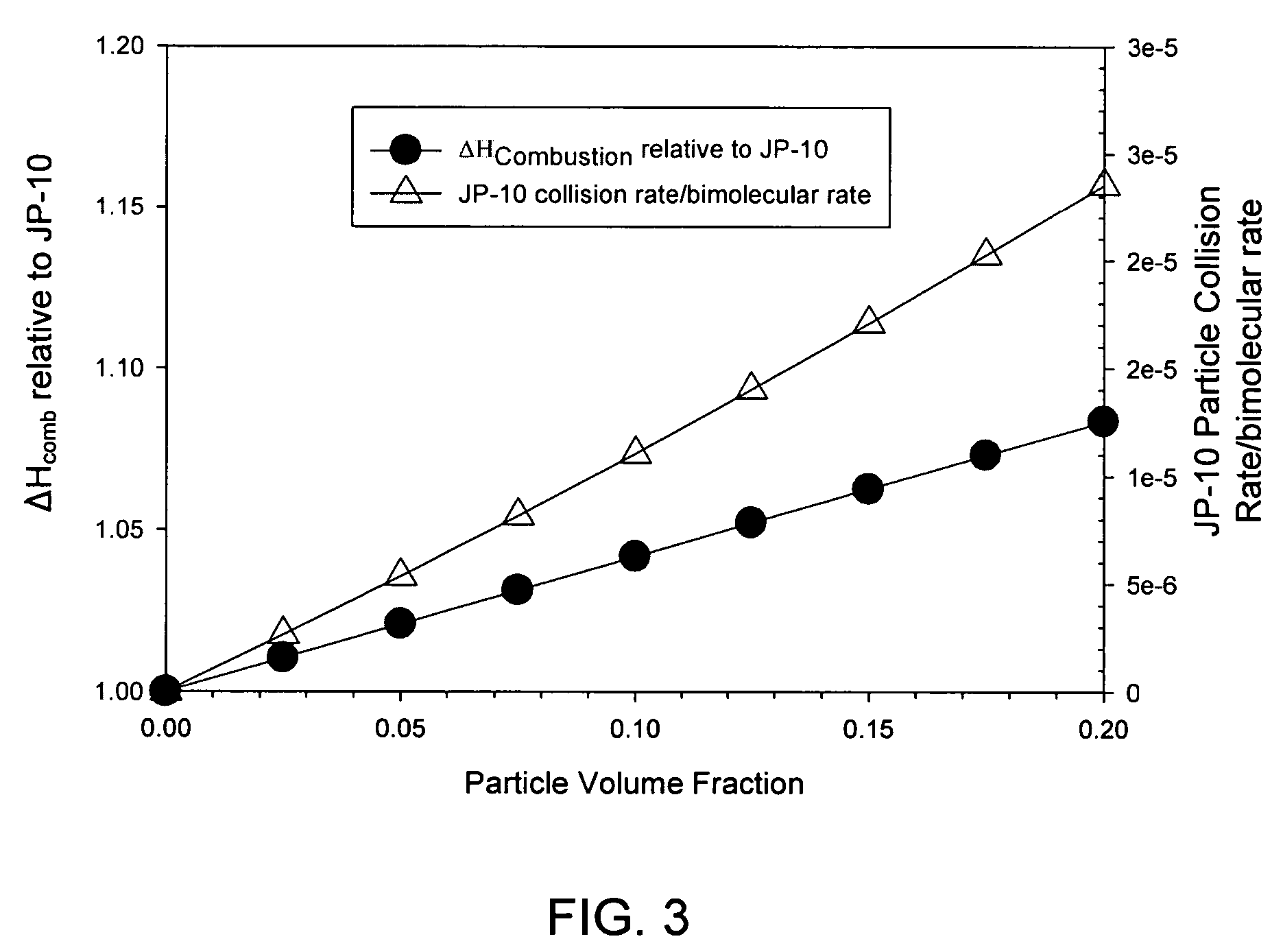Composite combustion catalyst and associated methods
a catalyst and composite technology, applied in the field of composite combustion catalysts, can solve the problems of limited energy density of current fuels, inconvenient use of fixed catalyst beds in such systems, and a substantially shorter time scale, so as to enhance the combustion rate of metal cores, enhance fuel, and contribute to the energy released during combustion
- Summary
- Abstract
- Description
- Claims
- Application Information
AI Technical Summary
Benefits of technology
Problems solved by technology
Method used
Image
Examples
example
[0058]A mass spectrum of JP-10 ˜5% in helium was obtained by electron impact (EI) ionization after passage through a room temperature flow tube reactor and was used as a reference point for JP-10 without decomposition. Similar EI mass spectra were obtained on JP-10 at 830 K, 920 K, and 1150 K. Additionally, an enhanced fuel mixture of JP-10 and cerium oxide particles as a catalyst, was subjected to ionization after passage through a flow tube reactor at the identified temperatures.
[0059]For these tests, a flow tube reactor was used having a 3 mm inside diameter alumina tube, the final 20 cm length can be heated by an external heater jacket. The average residence time of the flow in the hot zone of the reactor is on the order of 1 millisecond, and the pressure is low enough (˜15 mbar at the upstream end of the tube) that diffusion mixes the gas during the flow, and ensures that the average JP-10 reactant molecule will collide at least several times with the tube walls. Gas exiting th...
PUM
| Property | Measurement | Unit |
|---|---|---|
| diameter | aaaaa | aaaaa |
| thickness | aaaaa | aaaaa |
| thickness | aaaaa | aaaaa |
Abstract
Description
Claims
Application Information
 Login to View More
Login to View More - R&D
- Intellectual Property
- Life Sciences
- Materials
- Tech Scout
- Unparalleled Data Quality
- Higher Quality Content
- 60% Fewer Hallucinations
Browse by: Latest US Patents, China's latest patents, Technical Efficacy Thesaurus, Application Domain, Technology Topic, Popular Technical Reports.
© 2025 PatSnap. All rights reserved.Legal|Privacy policy|Modern Slavery Act Transparency Statement|Sitemap|About US| Contact US: help@patsnap.com



